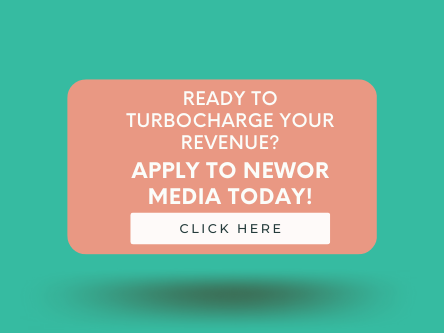
Header bidding solutions are a game-changer in programmatic advertising. They allow publishers to offer inventory to multiple ad exchanges simultaneously before making calls to their ad servers.
This method maximizes ad revenue by increasing competition among advertisers. Choosing the correct header bidding solution is crucial. It ensures publishers tap into the best possible revenue streams.
With the landscape of header bidding solutions constantly evolving, staying informed and selecting an optimal solution becomes paramount. This guide compares the top programmatic header bidding solutions, offering insights to make informed decisions in this dynamic field.
Understanding Header Bidding
Header bidding lets publishers offer ad space to several ad exchanges before calling their ad servers. This differs from traditional methods, where one ad exchange gets a first look, often limiting revenue potential.
It’s a tech that boosts ad revenue by letting multiple ad exchanges bid on ad space simultaneously. Unlike traditional ad serving, where bids are sequential, header bidding happens simultaneously, maximizing competition and revenue.
Benefits of Header Bidding
- Increased Revenue: More bidders mean higher ad rates.
- Greater Control: Publishers can set minimum prices.
- Enhanced Transparency: See which ads bring in the most revenue.
- Wider Advertiser Reach: Access to a larger pool of advertisers.
Challenges and Considerations
- Complex Setup: Requires technical expertise to implement.
- Potential Latency: More bids can slow down site loading times.
- Maintenance: Ongoing effort is needed to manage and optimize bidding strategies.
Comparing Leading Header Bidding Platforms
Choosing the right header bidding platform is critical for maximizing ad revenue and ensuring a smooth user experience.
Prebid.js
Prebid.js is a frontrunner in the open-source header bidding world. It facilitates publishers’ integration of multiple ad exchanges before making calls to ad servers. It champions transparency and flexibility, allowing tailored ad solutions catering to diverse publisher needs.
Key Features
- Open-Source Nature: Offers unparalleled transparency and flexibility, allowing for community-driven enhancements and customizations.
- Comprehensive Support for Ad Formats: Accommodates display, video, and native ads, ensuring publishers can maximize revenue across all content types.
- Rich Partner Ecosystem: Connects with vast demand partners, broadening revenue opportunities.
- Advanced Features for Optimization: Includes features like bid adjustment and timing controls, helping publishers optimize ad revenue.
- Robust Analytics and Reporting: Provides detailed insights into bidding performance, enabling data-driven decisions.
Pros
- Cost-Effective: Being open-source, it’s free to use, reducing operational costs.
- High Customization: Allows for detailed customization to meet specific publisher requirements.
- Strong Community Support: Benefits from a large community for troubleshooting and development.
Cons
- Requires Technical Expertise: Setup and optimization demand good technical knowledge.
- Potential for Increased Latency: This can introduce latency if not correctly optimized.
Google Ad Manager (GAM)
Google Ad Manager is a comprehensive ad management platform that combines the features of DoubleClick for Publishers and DoubleClick Ad Exchange. It offers a seamless way to manage programmatic sales and direct ads, providing robust tools for optimization and analysis.
Key Features
- Unified Advertising Platform: Merges programmatic and direct ad sales for streamlined management.
- Advanced Targeting Options: Delivers sophisticated targeting capabilities, enhancing ad relevance and performance.
- Cross-Platform Support: Enables ads across mobile, desktop, and video, offering extensive reach.
- Integration with Google Ecosystem: Seamlessly integrates with other Google services, offering enhanced capabilities.
- Reliable Support and Scalability: Backed by Google’s infrastructure, ensuring reliability and scalability.
Pros
- Comprehensive Solution: Offers a wide range of tools and options in one platform.
- Global Reach: Leverages Google’s vast network for broad ad exposure.
- Detailed Analytics: Provides in-depth reporting tools for performance tracking.
Cons
- Complexity: Its comprehensive nature can be overwhelming for new users.
- Preference for Google’s Network: We may prioritize Google’s ecosystem over others.
Amazon Transparent Ad Marketplace
Amazon Transparent Ad Marketplace (TAM) leverages Amazon’s vast shopper data to offer targeted advertising solutions. It integrates seamlessly with Amazon Publisher Services, providing publishers access to high-quality demand from Amazon’s advertising network.
Key Features
- Access to Amazon’s Shopper Data: Utilizes rich data for targeted advertising, enhancing relevancy.
- Seamless Integration: Easily integrates with publisher’s existing setups, minimizing disruption.
- Competitive Bidding Environment: Facilitates real-time bidding, driving up ad revenue.
- Support for Various Ad Formats: Accommodates display and video ads, catering to diverse content strategies.
- Amazon’s Brand Safety Measures: Ensures ads are placed in safe, appropriate contexts.
Pros
- High-Quality Ad Demand: Attracts premium advertisers through Amazon’s network.
- Data-Driven Targeting: Enhances ad performance with Amazon’s consumer insights.
- Ease of Use: Simplifies setup and operation for publishers already using Amazon services
Cons
- Complex Setup and Management: The platform’s advanced features and options require a steep learning curve and ongoing management.
- Integration Requirements: Efficient platform use may require additional tools or services, adding complexity.
PubMatic
PubMatic offers a robust and scalable header bidding solution designed to optimize digital advertising revenue for publishers across various formats and platforms. It focuses on efficiency and innovation, providing real-time analytics and automation tools.
Key Features
- Comprehensive Ad Format Support: Supports various formats, including display, video, mobile, and native, catering to diverse publisher needs.
- Real-Time Analytics and Reporting: This service offers advanced analytics tools, enabling publishers to make data-driven decisions and optimize ad strategies.
- Automated Optimization: Utilizes machine learning to optimize bids and placements automatically, increasing revenue potential.
- Global Demand Access: Connects publishers to a vast network of advertisers worldwide, ensuring high fill rates and competitive bids.
- Flexible Integration Options: It provides seamless integration with various platforms, including easy setup for client- and server-side solutions.
Pros
- Enhanced Revenue Opportunities: Delivers access to a wide range of demand sources.
- Advanced Analytics: Helps publishers track and optimize performance in real-time.
- User-Friendly Interface: Simplifies the management of ad operations.
Cons
- Complexity for New Users: The array of features can overwhelm beginners.
- Integration Time: Setting up and optimizing the platform may require time and resources.
Rubicon Project (Now Part of Magnite)
Following its merger with Telaria, the Rubicon Project has become part of Magnite. Magnite offers a comprehensive programmatic advertising platform emphasizing transparency and control for publishers and advertisers alike.
Key Features
- Unified Programmatic Platform: Combines display, video, and mobile advertising under one roof.
- Advanced Targeting and Optimization: Leverages data and technology to match ads with the right audience, maximizing revenue.
- High Transparency and Control: Offers detailed insights into bidding processes and advertiser intentions.
- Extensive Demand Network: Access to a broad range of advertisers and demand partners globally.
- Flexible Monetization Options: Supports various monetization strategies, including direct deals and private marketplaces.
Pros
- Comprehensive Solution: Covers all aspects of digital advertising on a single platform.
- Market Reach: Expands publisher access to numerous demand sources.
- Transparency: Provides clear visibility into transactions and performance.
Cons
- Learning Curve: The platform’s depth and breadth can be challenging to navigate initially.
- Integration Complexity: Customization and optimization require technical assistance.
OpenX
OpenX offers a powerful header bidding solution prioritizing transparency, efficiency, and scalability. This solution enables publishers to maximize ad revenue across every format and channel.
Key Features
- Wide Range of Ad Formats: Supports display, video, mobile, and native ads, offering flexibility to publishers.
- Prebid Support: Integrates seamlessly with Prebid.js, facilitating easy adoption and setup.
- Real-Time Bidding (RTB) Technology: Empowers real-time auctions, ensuring optimal ad revenue.
- Dedicated Support and Services: Provides expert assistance and strategic consulting to optimize ad performance.
- Advanced Security Measures: Implement strict security protocols to protect against fraud and ensure brand safety.
Pros
- Flexibility and Scalability: Adapts to the needs of publishers of all sizes.
- High-Quality Demand: Connects with premium advertisers for better monetization.
- Strong Support Infrastructure: Offers reliable technical and strategic support.
Cons
- Demand Quality Variation: The experience of ad quality may vary.
- Platform Complexity: Navigating the full suite of features requires a learning period.
Sovrn
Sovrn presents tools designed to empower publishers through data, monetization, and audience engagement solutions, focusing on maximizing revenue with minimal effort.
Key Features
- Diverse Monetization Tools: Offers a range of products for affiliate marketing, display advertising, and more.
- Commerce-Driven Revenue: Specializes in affiliate links and commerce-related ad opportunities.
- Engagement and Analytics Tools: Provides insights into audience behavior to optimize content and ads.
- Community and Support: Strong publisher community with access to dedicated support.
- Ease of Use: Designed for straightforward setup and management, regardless of technical expertise.
Pros
- Comprehensive Revenue Solutions: Broadens revenue streams beyond traditional ads.
- Publisher-Centric Approach: Focuses on tools and insights that empower publishers.
- Responsive Support: Quick and helpful assistance for users.
Cons
- Limited Advanced Features: This may offer a different depth of functionality in larger platforms.
- Focus on Niche Markets: Best suited for publishers with strong e-commerce content.
Comparative Analysis of Header Bidding Platforms
When choosing a header bidding solution, comparing the leading platforms is crucial to determine which best fits your needs. This comparative analysis provides an overview and detailed examination of key features, performance metrics, and suitability for various publisher sizes and types.
Feature Comparison
Each header bidding platform offers unique features that cater to different publisher needs, seamlessly integrating into the diverse ecosystem of header bidding solutions. For instance, Prebid.js is renowned for its low latency and strong community support, making it ideal for publishers prioritizing auction speed and community-driven solutions.
On the other hand, Google Ad Manager offers a comprehensive suite of ad formats, including AR/VR, and unparalleled scalability, suitable for large publishers looking for an all-in-one ad management solution.
Performance and Suitability Analysis
Performance metrics such as auction speed and latency significantly impact user experience and ad revenue. Platforms like Prebid.js and Index Exchange are noted for their low latency, ensuring faster ad loading times and better user experiences.
Scalability is another critical factor; Google Ad Manager and PubMatic excel here, offering robust solutions that grow with your business, making them perfect for publishers of all sizes.
Cost and Support Comparison
The cost of integration and ongoing maintenance can vary widely. Amazon Transparent Ad Marketplace and Sovrn are considered more budget-friendly options, offering competitive features without the high costs associated with some other platforms.
In terms of support, Google Ad Manager and Prebid.js stand out for their extensive documentation, responsive technical support, and vibrant communities, providing publishers with the resources they need to succeed.
Factors to Consider When Choosing a Header Bidding Solution
When looking for the correct header bidding solution, certain factors play a pivotal role in ensuring you make a choice that meets your current needs and aligns with future growth.
Understanding these factors can help you make an informed decision, optimize ad revenue, and enhance your site’s performance.
Scalability and Flexibility
Choosing a solution that scales with your business is crucial. As your audience grows, your ad operations should seamlessly expand to meet increasing demand without compromising performance.
Look for platforms that offer customization options. This flexibility allows you to tailor the solution to your unique needs, ensuring your ad strategy evolves alongside your business.
Technical Support and Community
Robust technical support can significantly reduce the stress of managing a header bidding solution. Opt for platforms known for their responsive and helpful support teams.
An active development community is also a valuable resource. It provides access to a wealth of knowledge, troubleshooting tips, and potential collaborations, making it easier to navigate any challenges that arise.
Cost Considerations
Understanding the financial implications is essential. Consider the initial setup costs associated with integrating a new header bidding platform.
These can vary widely, so finding a solution that fits your budget without compromising essential features is key—additionally, factors in ongoing maintenance expenses. Regular updates, support, and optimization efforts require resources, and being mindful of these costs will help you manage your ad operations more effectively.
Future-Proof Your Ads
In the intricate world of digital advertising, the careful selection of header bidding solutions cannot be overstated. When chosen wisely, these solutions can elevate your ad revenue and streamline operations seamlessly.
As we navigate the complexities of header bidding, it becomes clear that this is not a one-size-fits-all scenario. Each platform offers unique benefits and challenges, demanding a thoughtful approach to integration.
Moreover, the ad tech space continuously evolves, with new technologies and strategies emerging regularly. Thus, embracing ongoing education and being open to adaptation are crucial for publishers aiming to stay ahead.
By committing to this continuous learning process, publishers can remain competitive in the dynamic digital landscape and take advantage of the opportunities offered by header bidding solutions.

